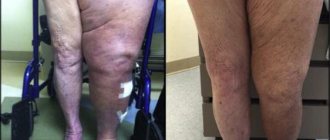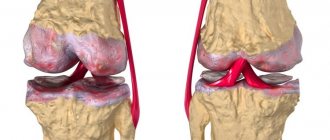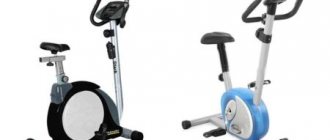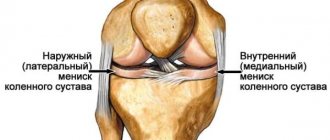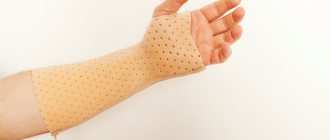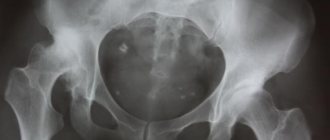In case of significant injuries to the knee joint, when conservative treatment programs give poor results and the patient experiences constant pain, surgery to replace the knee joint with an endoprosthesis . Indications for it are:
- persistent pain;
- limited leg mobility;
- absent or insufficient effect of conservative therapy.
Endoprosthetics is a surgical procedure that is quite complex in itself. But the qualifications of the specialist who conducts it are not the only requirement for a successful result. It is also important to choose the right endoprosthesis itself. Which is not so simple, given how many options the modern market offers: they differ in size, functionality, type of fixation and other characteristics.
Rules for choosing a prosthesis
The choice of a knee replacement is always a joint decision between the patient and the surgeon who advises him. There are more than 150 types of such products on the modern market, and there is no general ideal solution for all. In each case, this decision will be individual.
In your search, you should rely on the following characteristics:
- age, weight, anatomical features of the person who will undergo endoprosthetics;
- the patient's level of activity;
- the type of future operation with a knee joint endoprosthesis (minimally invasive surgical techniques have largely reduced the discomfort from the procedure, but the choice of prostheses for such endoprosthesis is very limited);
- characteristics of the injury and the pathological processes to which it led;
- general state of human health, etc.
Requirements for knee replacements
Although there are many factors that determine the success of choosing a knee endoprosthesis , there is only one list of general requirements that any implant must meet. And it must be studied in detail before the search begins.
So, 6 basic requirements:
- wear resistance of the material (the operation is carried out based on the future long-term use of implants in conditions of constant activity, which determines the need for high wear resistance of the product materials, the minimum service life of the prosthesis is 15 years, the maximum usually does not exceed 20 years);
- functionality (the knee joint is one of the most mobile in the human body; accordingly, its endoprosthesis must provide a sufficient amplitude of flexion/extension without limiting knee movements);
- biocompatibility (one of the key risks of endoprosthetics is rejection of a foreign object by one’s own tissues; to reduce this risk, it is necessary to use compatible implants; a good prosthesis must be hypoallergenic);
- high-quality mechanical characteristics (high strength of the material that can withstand constant loads, easy sliding of the corresponding components of the knee endoprosthesis );
- compliance of the shape and size with the anatomical features (the implant must accurately follow the natural bends and protrusions of the bone);
- the ability to maintain shape and function for a long time (in other words, we are again talking about the durability of the prosthesis, which should not be deformed or worn out during its use).
Relieving constant pain and restoring leg mobility are the key tasks that endoprosthetics solves to improve the patient’s comfort of life. From a therapeutic point of view, the key goal of the operation is to completely restore the functionality of the knee. It is clear that there cannot be a general solution to achieve it, as well as some kind of universal standard.
And yet you need to understand that on the knee endoprosthesis there are products of different quality - more and less durable, safe.
In addition, do not forget that the service life and ease of use of the prosthesis depends not only on the prosthesis itself, but also on the correct installation.
Preparing for surgery
The decision on the need for surgery is made only after a face-to-face consultation with a specialist in the appropriate field. There are a number of tests and examinations to determine the degree of wear of the joint, as well as to find out what functional load it can bear. Based on these data, as well as in the absence of contraindications, surgery is prescribed. For each patient, the type of endoprosthesis is individually selected, taking into account the anatomy and current condition of the bones.
Preoperative examination is required to prepare for surgery. It is customary to undergo it in the same clinic where the operation is planned to be performed. In addition to this examination, a consultation with an anesthesiologist is required.
There are several types of anesthesia - your doctor will help you choose the right one. Either general anesthesia or spinal anesthesia is used. In any case, the operation itself is painless for the patient, and discomfort can only arise at the rehabilitation stage and is considered a normal stage in the body’s recovery process.
Types of knee replacements
Knee endoprostheses are divided into types according to three main characteristics - materials of manufacture, the type of endoprosthesis surgery for which they are suitable, and the method of installation.
- The following materials are used for various elements of the knee prosthesis:
- metal alloys (the part installed on the femur is usually made from them);
- high-strength plastic (used in the construction of the inner part of the patella for total knee replacements );
- combined materials (metal and special plastic), from which parts are often made intended to replace part of the joint on the tibia.
- According to the method of endoprosthetics (volume of intervention) there are: types of knee replacements, intended:
- for unicondylar arthroplasty (partial replacement of damaged joint components);
- total endoprosthetics (an operation to completely replace the knee joint with an endoprosthesis with the installation of artificial components on the femur, tibia, and, if necessary, on the inner surface of the patella).
- Based on the method of fixation, prostheses are divided into:
- for cemented knee replacements ;
- cementless;
- products installed in a combined way (with elements of cement and cementless installation).
Cement endoprostheses
Prostheses for cement fixation differ from analogues in that they have a special surface on which bone cement is applied to securely fasten the fixed part of the endoprosthetic component. This installation is highly reliable and has been successfully used in all types of operations.
An important point: success is determined not only by a high-quality replacement, but also by the composition itself for securing the prosthesis. In modern arthroplasty practice, cases where the cement composition weakens are quite rare (the material has been significantly improved in recent years), but still.
Cementless fixation
Prostheses for cementless fixation also have their own characteristics. Their surfaces must be porous and textured to ensure the speed and quality of natural integration - the growth of bone tissue into the components of the artificial joint.
The rehabilitation process when using such implants takes longer. In addition, there are restrictions for their use (the bone must be in good condition, any disease of it, starting with osteoporosis, is a limitation for cementless arthroplasty).
Diagnostics
Before surgery, diagnostics are performed to determine the stage of the disease. Conservative methods are relevant only at the initial stage. If MRI reveals coxarthrosis, ankylosing spondylitis, hip fracture and rheumatoid arthritis, partial or complete joint replacement with an implant is recommended. Before the operation, a general blood test and coagulogram are performed to avoid thrombosis and extensive blood loss. Additionally, the presence of contraindications and allergic reactions to medications and painkillers is clarified.
Cost of endoprostheses
The price of a knee replacement can vary greatly depending on:
- from the manufacturer's brand;
- materials;
- method of endoprosthetics;
- product size and other conditions.
The final cost of a knee replacement is determined individually when a decision is made on the preferred type of surgery and implant option.
DMU: organization and support of treatment in Germany
The advantages of endoprosthetics in Germany are enormous: advanced diagnostic equipment, vast experience of specialists, and a comprehensive, well-coordinated approach to treatment, which allows patients to receive not just a one-time service, but full-fledged care until complete recovery. At the same time, there are a lot of fears and obstacles: lack of language skills, the need to obtain a visa and flights, loneliness and lack of understanding of the treatment process.
The specialists of the German Medical Union fully take care of all the complexities of organizational issues:
- we will select a clinic and specialist for you;
- We will help with the preparation of documents and visas;
- throughout the entire treatment you will be accompanied by an interpreter who can explain all the subtleties that the doctor talks about;
- Together with you, we will plan the date of your trip and the duration of therapy, and we will accompany you on your flights.
Moreover, when contacting us, you can be completely sure that you have not overpaid for treatment. DMU specialists conduct an independent assessment of the invoices issued by the clinic and compare it with the prices for knee replacement in Germany, which are prescribed at the state level. We provide patients with the peace of mind that is so necessary for speedy rehabilitation.
How long will an endoprosthesis last?
The service life of the prosthesis is of great importance. The fact is that any endoprosthetics procedure (and given the limited period of use, it can be performed more than once) involves the removal of part of the patient’s own bone.
The more bone tissue is preserved, the easier the recovery is, and the better the artificial joints take root. This is why it is so important to immediately choose implants that will last at least 10–15 years. Ideally, the service life of a knee endoprosthesis (guaranteed by the manufacturer) should be 20 years or more. At the same time, it is worth understanding that revision endoprosthetics (planned replacement of the prosthesis) cannot be avoided anyway.
Recovery after surgery
No less important than the operation is the rehabilitation period. At this time, it is necessary to ensure proper and complete healing of the wound. According to statistics, pain after surgery is moderate, which allows you to begin rehabilitation measures the next day. The rehabilitation is carried out by a rehabilitation doctor. Under his supervision, patients begin to walk with partial or full weight bearing on their legs. In addition, it is customary to develop the joint passively: with the help of special exercises or hardware complexes. This is necessary in order to restore full range of motion and avoid knee stiffness.
As a rule, discharge from the clinic occurs after a few days. And by this point, patients are able to move independently, some with additional support. If all recommendations are followed, a return to previous activity is possible within a few weeks. And after a month you can even play sports, with virtually no restrictions.
If any complications arise, longer rehabilitation in a hospital is recommended.
Contraindications
- Local knee infection or sepsis,
- malignant tumors,
- excessive bone fragility (severe osteoporosis),
- obesity stage 3 - 4,
- remote (extra-articular), active, current infection or bacteremia,
- pathology of the circulatory system (clotting problems),
- severe metabolic disorder of the bone tissue of the legs,
- infectious disease in the acute stage,
- allergy to implant material,
- HIV infection,
- severe cases of vascular, renal, pulmonary dysfunction,
- age up to 25 years,
- mental illness,
- muscle paresis on the side of the intended operation,
- varicose veins of the legs.

